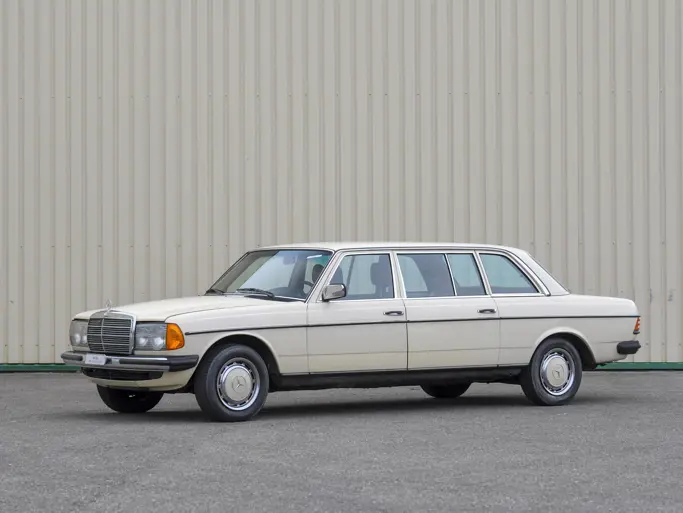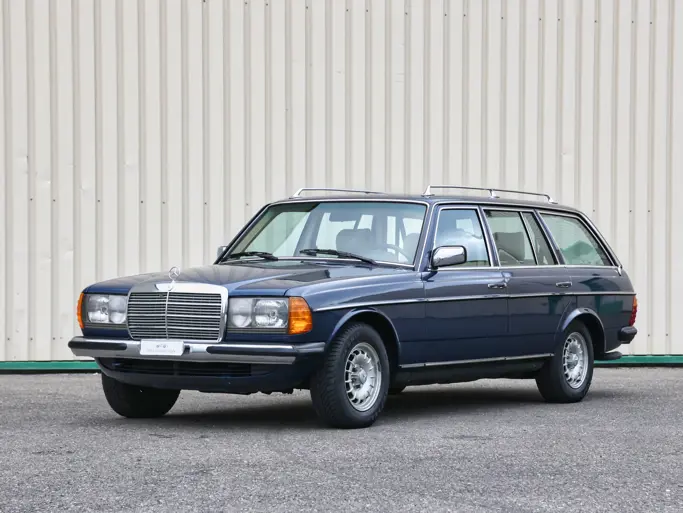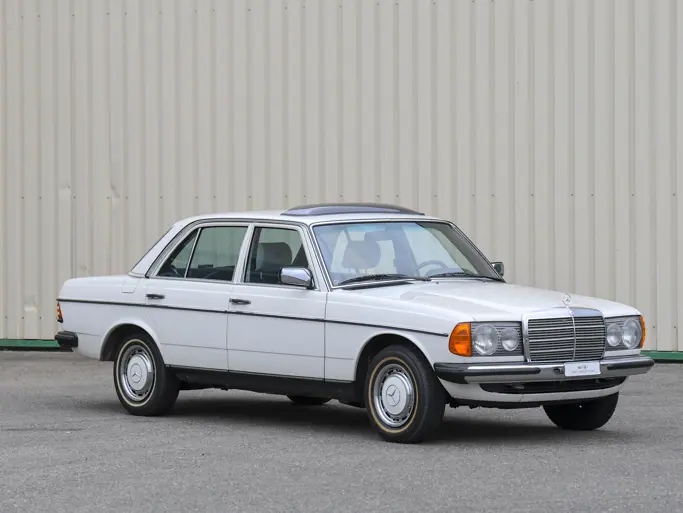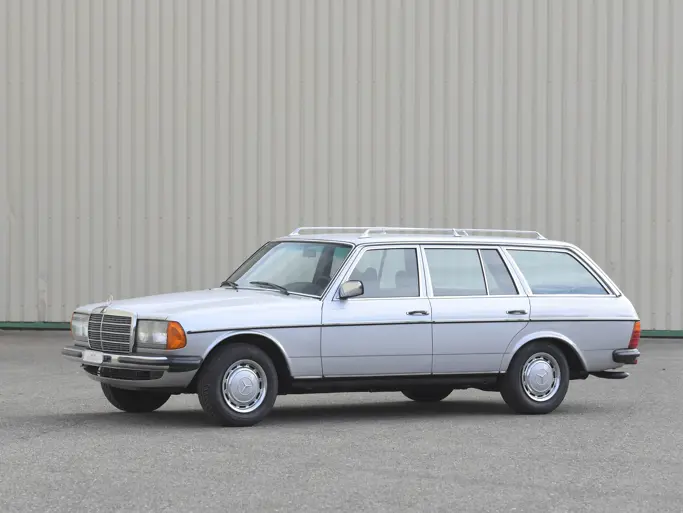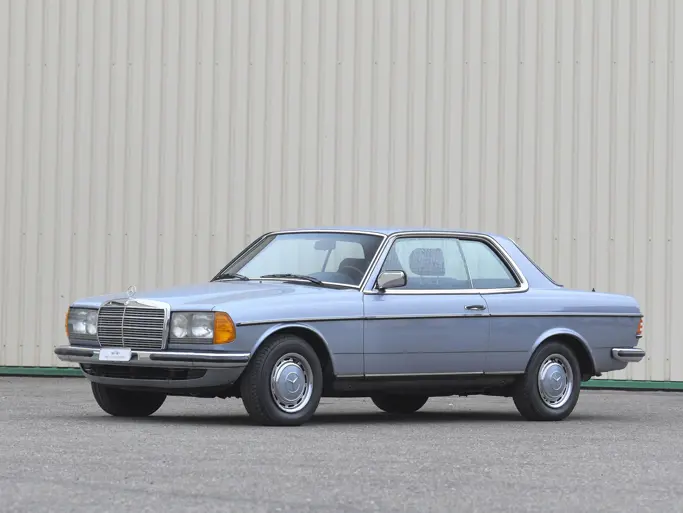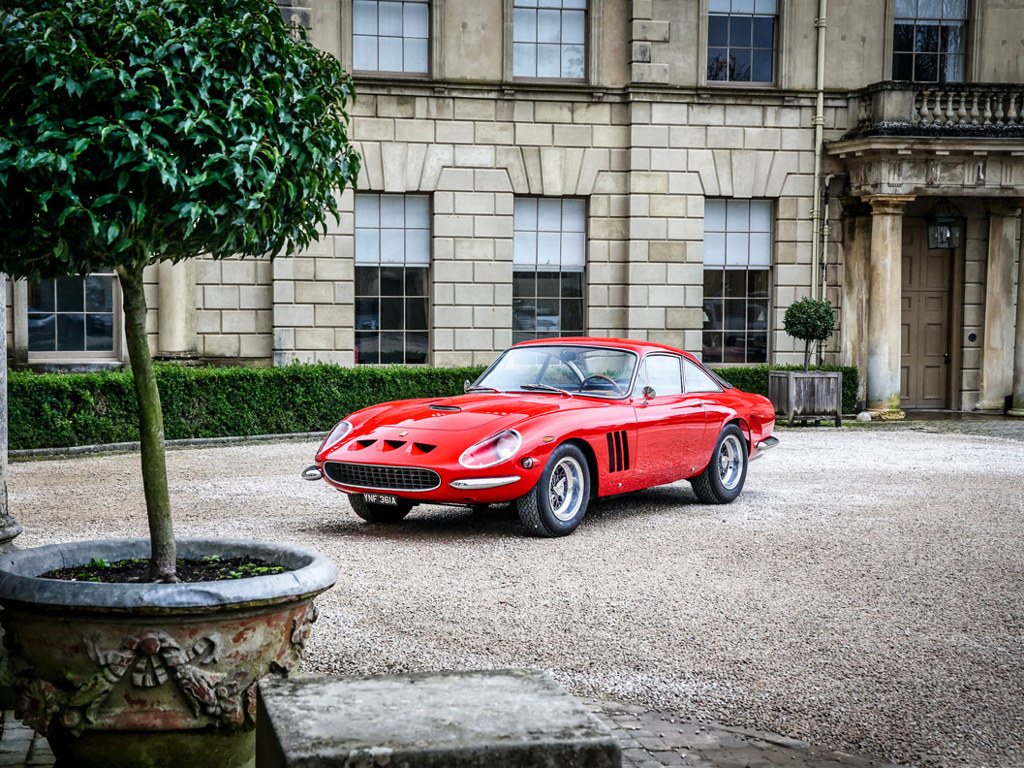Spend enough time in the trendiest parts of New York City, and you might catch a glimpse of an unrestored Biscayne Blue W123, a European-spec diesel. Oh, and Lady Gaga behind the wheel…She’s not the only famous aficionado—Jamiroquai’s Jay Kay, for example, has owned several. Of course, celebrities and Mercedes-Benzes are perfect bedfellows, but the W123’s path to a coveted classic car hasn’t been an easy one. For many years, it was ‘just’ a cheap Mercedes-Benz. However, interest in the model has been growing immeasurably over the past decade, with owners prepared to invest big in full-bore restorations, and while Mercedes-Benz built 2.7 million, high-quality examples are rare and coveted.
Those who looked at these cars as mere runabouts in their late 90s and early 00s nadir might wonder why these cars are so beloved, but this is a landmark model for its maker, one that deserves far more credit for widening the scope of the Three-Pointed Star. It really did bring Mercedes-Benz to a bigger audience, without compromising brand integrity. Though the W114/W115 had been successful, something much more radical was needed to counter growing safety and emissions regulations; it would also need to be stronger and easier to service.
Its resemblance to the W116 S-Class was no accident, and it would incorporate much of its bigger brother’s technical and safety innovations. In the event of a front-end smash, the engine and the transmission, for example, were designed to break free from two aluminum engine mounts, allowing the whole lot to exit under the car. The doors were designed to not burst open in the event of a crash, yet be opened normally in the aftermath. Inertia-reel seatbelts and front headrests were also standard, with anti-lock brakes an option from 1980 onwards; the 123 would also be among the first cars to offer airbags. Though much of the mechanicals were carried forward from the W114/W115, the W116 S-Class donated its dual-link front suspension, aiding stability. It was a properly engineered Mercedes-Benz, even if it was the entry point to the range.
It was a critical success, though a qualified one. There was no getting away from the fact that compared to more decadently luxurious rivals, the W123 was slower, more spartan, and much more expensive, but the general consensus was that the depth of engineering justified the price tag. “The Mercedes almost seems to dramatize the fact that it is a machine – a pleasant, comfortable machine, but a machine nonetheless – not a boudoir, or some mobile extension of your living room,” said David E Davis Jr. of Car & Driver. “It feels as safe as a house, and I’d love to own one.”
It was first launched as a saloon (W123) in late 1975, with an eight-seater long-wheelbase limousine following in August 1976 (V123). A year later, a short-wheelbase coupé version appeared, called the C123, while the first factory-built Mercedes-Benz estate, the S123, appeared in 1978. The latter swiftly became one of the most popular versions of the car; along with the Volvo 200-series and the Citroën DS and CX Safari/Break models, the S123 was one of the first truly aspirational European estate cars.
The public loved the W123; it was seen as offering the S-Class experience at a more approachable – if never cheap – price. It was so popular that waiting lists of more than a year had developed by 1977, and the German black market saw a premium of 5,000 Deutschmarks to acquire a W123.
Petrol engine choices were split between two four-cylinders and two straight-sixes, while there was a choice of four-cylinder and five-cylinder diesel. Initially, all petrol engines used carburetors, but Bosch K-Jetronic fuel injection started to replace all options from 1980 onwards, other than on the 250 models, which remained carbureted until the end. The OM617 five-cylinder turbo-diesel, meanwhile, was the first engine of its kind fitted to a passenger car.
The car’s innate strength and reliability would see W123 saloons serve as taxis for many years after the model was taken off sale; indeed, German taxi drivers protested the introduction of the perceived inferior replacement W124 model with a roadblock outside Mercedes-Benz’s Stuttgart HQ. One Greek taxi driver took his 1976 240D to 2.8m miles, believed to be the highest-mileage Mercedes-Benz to still be in use, and until recently, North Africa thrummed to the sound of diesel W123 taxis. However, this was no utilitarian load lugger – the W123 was popular with famous names, such as John Lennon, Bonnie Tyler, Barry Gibb, Franz Beckenbauer, and Kevin Keegan.
The W123 in all its variants has made the transition from a secondhand runner to a classic car in slow but steady style – in Germany, for example, it's only second to the Volkswagen Beetle as the most popular historic car. Further afield, the car’s classy, angular lines and rugged mechanicals have made it a cult car, with values rising as a result.
The Iseli family had a strong love of the Three-Pointed Star and the collection we have for sale. Leading the sale is a 1978 280 TE first owned by Cécile de Rothschild, philanthropist and professional golfer. It’s believed that Baroness Rothschild loved using the Mercedes for lavish jaunts with actress Greta Garbo. We also have a 1985 280 TE originally supplied to Switzerland via Garage de la Riviera, La Tour de Peilz.
For those looking for a spot of luxury, we have a 1978 250 Lang limousine, one of just 13,000 built, and a 1984 280 CE first delivered to Switzerland and sitting on just 83,938km. However, for many the iconic look is the saloon, and we have a stellar brace of W123s, both dating from 1983. Our 280 E was sold new to the UK and collected from the factory birthplace by its first owner, who hit the expensive options list hard with air conditioning, a Becker Avus radio, central locking, and cruise control, while our 230 E is a Swiss-delivered sunroof model. All are offered with no reserve.
Whichever one tickles your fancy, when bidding, take care: with demand for the W123 so high, make sure you have a good Poker Face…


